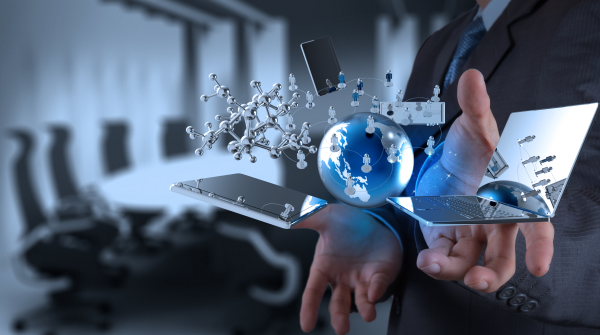Emerging tech trends to watch in 2023

Emerging tech trends to watch in 2023

As the world of technology continues to evolve, it's important to stay abreast of the latest trends and developments. In 2023, we will see a series of new technologies that will completely change our lives. From artificial intelligence to 5G networks and more, explore some of the emerging tech trends we should be paying attention to this year.
Augmented Reality
Augmented reality is a technology that enables users to interact with digital content in the real world. By overlaying virtual images and information on top of the physical world, AR offers a uniquely immersive experience that enhances the way we learn, work and play.
There are many different AR platforms available, all of which have their own strengths and weaknesses, but all offer many possibilities for businesses and consumers.
Virtual Reality
Virtual reality is a computer-generated three-dimensional image or simulation of an environment that can be interacted with in a seemingly real or physical way by a person using special electronic devices, such as a helmet with a screen inside or a glove with sensors.
The technology has been around for decades, but it's only recently that consumers have been able to afford it. Today, there are many different VR devices on the market, ranging from high-end headsets that require a powerful computer to run, to standalone devices that work with your smartphone. There are also many different types of content available for VR devices, including games, movies and other experiences. Some content is designed specifically for VR, while others are converted from traditional 2D media to VR formats.
VR is still in its early days, but it is developing rapidly. New hardware and software developments are being released all the time, and VR is likely to become more popular in the coming years.
blockchain
Blockchain is the digital ledger of all cryptocurrency transactions. It keeps growing as completed chunks are added to new sets of recordings. Each block contains a cryptographic hash of the previous block, a timestamp, and transaction data. Bitcoin nodes use the blockchain to distinguish legitimate Bitcoin transactions from attempts to re-spend coins that have already been spent elsewhere.
5G
5G is the next generation of mobile network technology, offering faster speeds and lower latency than ever before. This will enable new applications such as AR/VR, gaming and streaming video
internet of things
The Internet of Things is a system of connected devices and sensors that collect and share data about their surroundings. IoT devices can range from simple fitness trackers to complex industrial machines. IoT devices are made possible by a combination of technologies, including miniaturization, improved wireless connectivity and cloud computing. These devices are often equipped with sensors that collect data about their surroundings, which are then wirelessly transmitted to the cloud. From there, the data can be analyzed and used to improve a device's performance or make decisions about its surroundings.
One of the most promising applications of IoT is in the field of smart cities. By installing sensors in public places like bus stops and parking meters, city planners can collect real-time data on traffic patterns and congestion. This information can be used to optimize public transport routes and reduce traffic congestion.
IoT also has the potential to transform healthcare. For example, wearable devices that monitor vital signs can be used to detect disease or early signs of disease. Additionally, hospitals can use IoT medical devices to track inventory levels and prevent shortages of critical supplies.
artificial intelligence
Artificial intelligence is one of the most talked about emerging technologies today. With the rapid development of machine learning and artificial intelligence technologies, enterprises are beginning to explore how to use these technologies to automate tasks, improve efficiency and optimize operations.
One of the most common applications of artificial intelligence is predictive analytics, which can be used to identify trends, make recommendations, and predict future outcomes. Other popular applications include natural language processing, image recognition, and speech recognition.
As AI technology continues to develop, we can expect to see more innovative applications that will further change the way businesses operate.